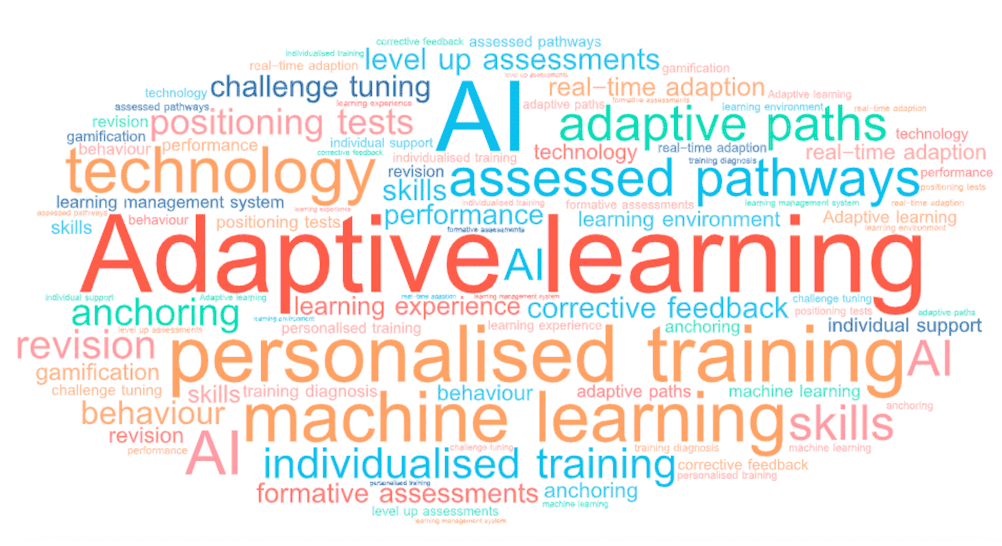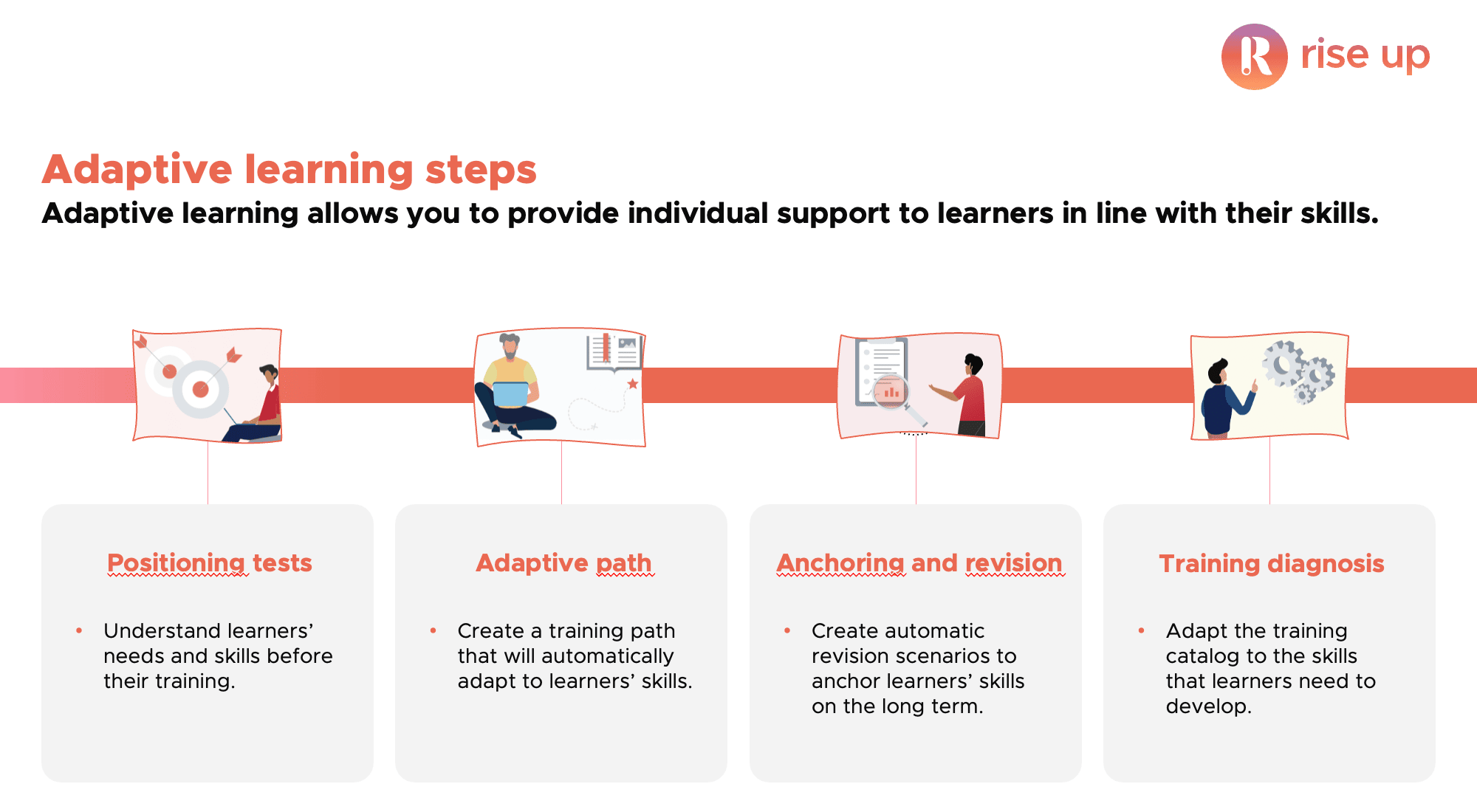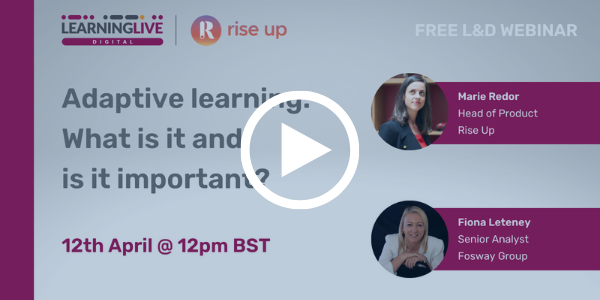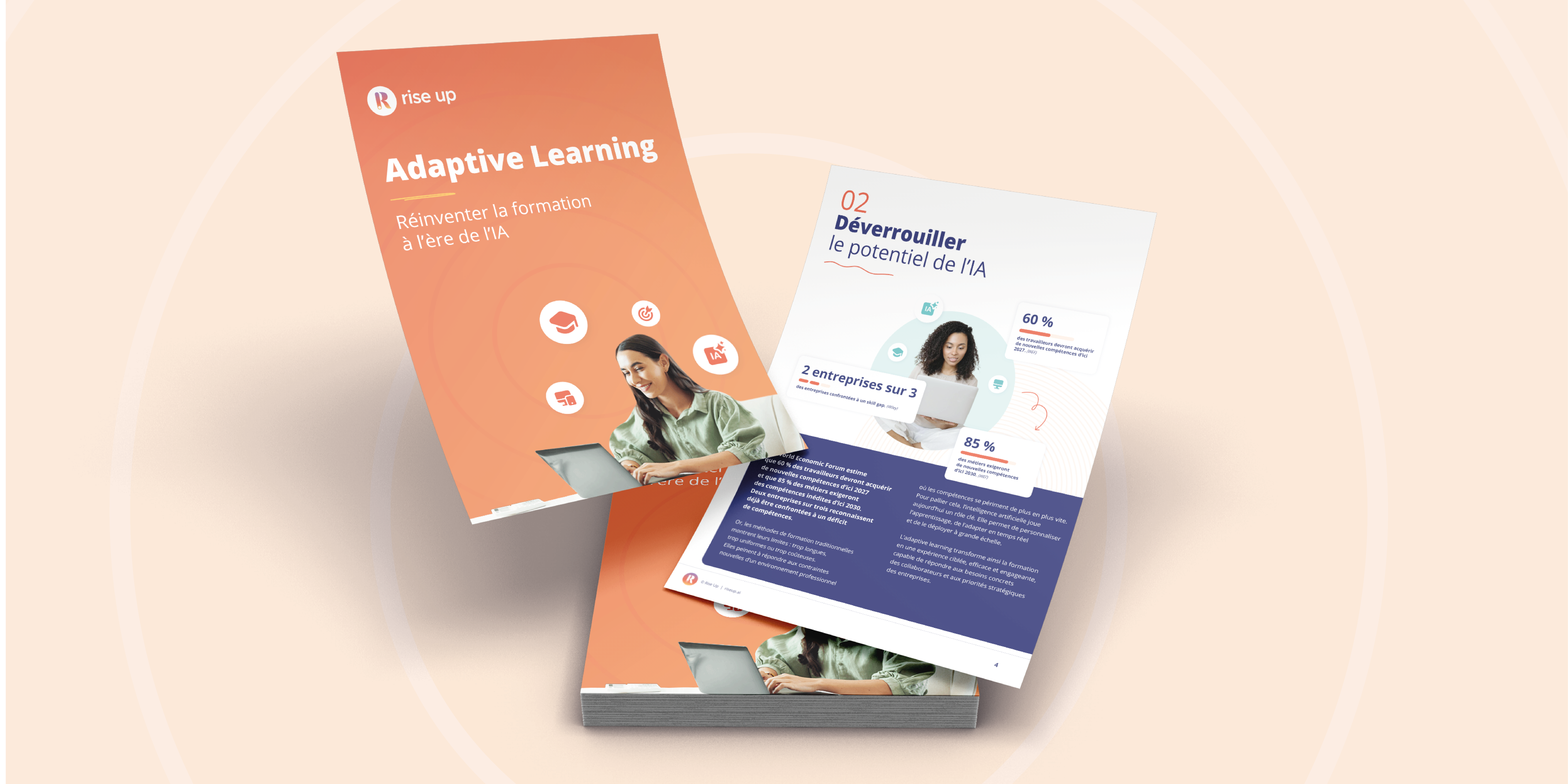Adaptive learning: What is it and is it important?
6 minutes of reading | 2022-05-14
This was the title of a recent webinar on adaptive learning, conducted by Rise Up in conjunction with HR analysts Fosway Group. Michael Strawbridge, global head of community at the Learning and Performance Institute, chaired the webinar, with Marie Redor, head of product at Rise Up and Fiona Leteney, senior analyst at Fosway Group, forming the panel.
What is adaptive learning?
The webinar started with Strawbridge asking the participants a simple but very important question. It was: “How would you define adaptive learning?”
Why is this such an important question? Because definitions of adaptive learning vary, with it meaning different things to different people. And because although adaptive learning has been around for a while, it is still evolving as an approach to learning and hasn’t been widely adopted yet. This is largely because the technology driving adaptive learning (as we know it today) is still evolving. AI capabilities are so deeper and more sophisticated than they were even a couple of years ago, which means that the technology is starting to deliver on its promise.
The participants’ view
There were some very interesting answers to Strawbridge’s first question. Several people talked about personalisation – "Learning resources, pathways etc, personalised to the individual”, “Choosing a learning path that responds to learner needs/ongoing learning”, and “The ability to deliver learning to a diverse audience in an effective way, which personalises it for everybody,” for example.
Others talked about adaptive learning as means to provide a very flexible approach to learning. “Versatile delivery, versatile consumption,” said one person. And “Flexible learning that can adapt to pressures and needs of the organisation and individual,” said another. Inclusivity also cropped up several times, as did agility – “Change as change happens,” said one participant.
Another person described it as an overhaul of the traditional approach to learning, saying: “Radicalising the legacy thinking of learning, meeting learner needs with the right training, at the right time, in the right methods.”
The panel’s view
Fiona Leteney agreed that there is a lot of variation around adaptive learning, but said there are some essential commonalities:
“Content that’s delivered to the learner that is personalised. It’s adapted, it’s very specific to that learner and it happens dynamically.”
Marie Redor also agreed that it’s very much about content meeting learners’ individual needs. She talked about macro and micro adaptive learning, a common theme here at Rise Up.
“There is this notion of macro-adaptive learning – how you suggest content that is adapted to the level of the person. And micro-adaptive learning – how you adapt the type of content you show to people, depending on what suits them best.”
At Rise Up, we say that macro-adaptive focuses on personalised training pathways, while micro-adaptive focuses on personalised training content.

Current usage of adaptive learning
A poll among participants to find out how many had already gone down the adaptive learning route showed that a little under half (41%) had already adopted it, with 59% saying not yet. “That surprises me,” said Leteney. “I would not have expected as many to be using it yet.” However, Leteney did suggest that perhaps the results were skewed by the type of participants (because those attending were already interested in or committed to adaptive learning) and that the findings did not represent the bigger picture.
Participants were also invited to include some comment on the state of adaptive learning in their organisation and again, the results made for interesting reading. One answer in particular stood out: “I wish – the business is not ready for it yet! There’s a huge culture change required.” Also: “We use varied ways of learning…but are they valuable and impactful?....no,” a comment that another participant agreed with. One participant said her organisation still has some way to go, but that the Covid-19 pandemic has pushed the dial forward on digitisation, bringing adaptive learning closer.
Even when organisation are using adaptive learning, the general consensus was that it’s early days and they are not realising the full benefits yet. “Using it now, but only to a limited extent and feel there is much more we can do,” said one participant. There were also a couple of comments saying that recommendation engines are currently not particularly useful and cannot be classed as personalisation.
This was echoed by Leteney, who said:
“Personalisation is about the learning itself, not just learning recommendations.”
Rise Up’s approach to adaptive learning
Redor then talked about Rise Up’s approach to adaptive learning, a four step approach: positioning tests, adaptive path, anchoring and revision and training diagnosis.
“The idea is to start by acknowledging what the learner needs and what skills are at the beginning,” she said. “The positioning tests are linked to skills, to see where learners are.”
Step two, the adaptive path, is when organisations create a training path that will automatically adapt to learners’ skills. Anchoring and revision, step three, is about embedding the learning, creating automatic revision scenarios to anchor learners’ skills in the long term. And the fourth step, the training diagnosis, is about adapting the training catalogue to the skills that learners need to develop.

Redor said it’s critically important that L&D gathers data – data on skills, on learner needs, on the impact of learning, etc. And it makes good use of that data in order to create really good learning pathways. This is something AI can really help with.
“We see AI as a tool to do complex predictions,” she said.
Adaptive learning future adoption
Further through the webinar, in another poll the people who weren’t yet deploying adaptive learning were asked if they were thinking about it for the future. Almost half (43%) said they were ready to explore it.
Returning to the comment from early on in the webinar - “I wish – the business is not ready for it yet! There’s a huge culture change required” – Strawbridge asked Redor and Leteney what L&D should do to move the adoption of adaptive learning on.
“Pick an area that is of interest to the business, where the training is going to have an effect on the bottom line,” said Leteney.
“Show how it can work and what impact it can have on the business.” Redor agreed: “To start, pick an area. Measure it and make a plan. Show the results of what you did to your business leaders.”
Conclusion
As the webinar indicated, adaptive learning is starting to take off. L&D is increasingly interested in incorporating adaptive learning into the mix, but are not yet sure how to go about it and many don’t fully understand the potential of adaptive learning. People want personalised learning and organisations want personalised learning, across various industry sectors.
What L&D needs to be able to do now is put together the business case for why and how – how does adaptive learning work? How will it benefit learners and the business? What’s the ROI? “Everything needs to be data driven,” said Leteney.
“With the right data, we can show that we are having impact. That is the ultimate goal.”





